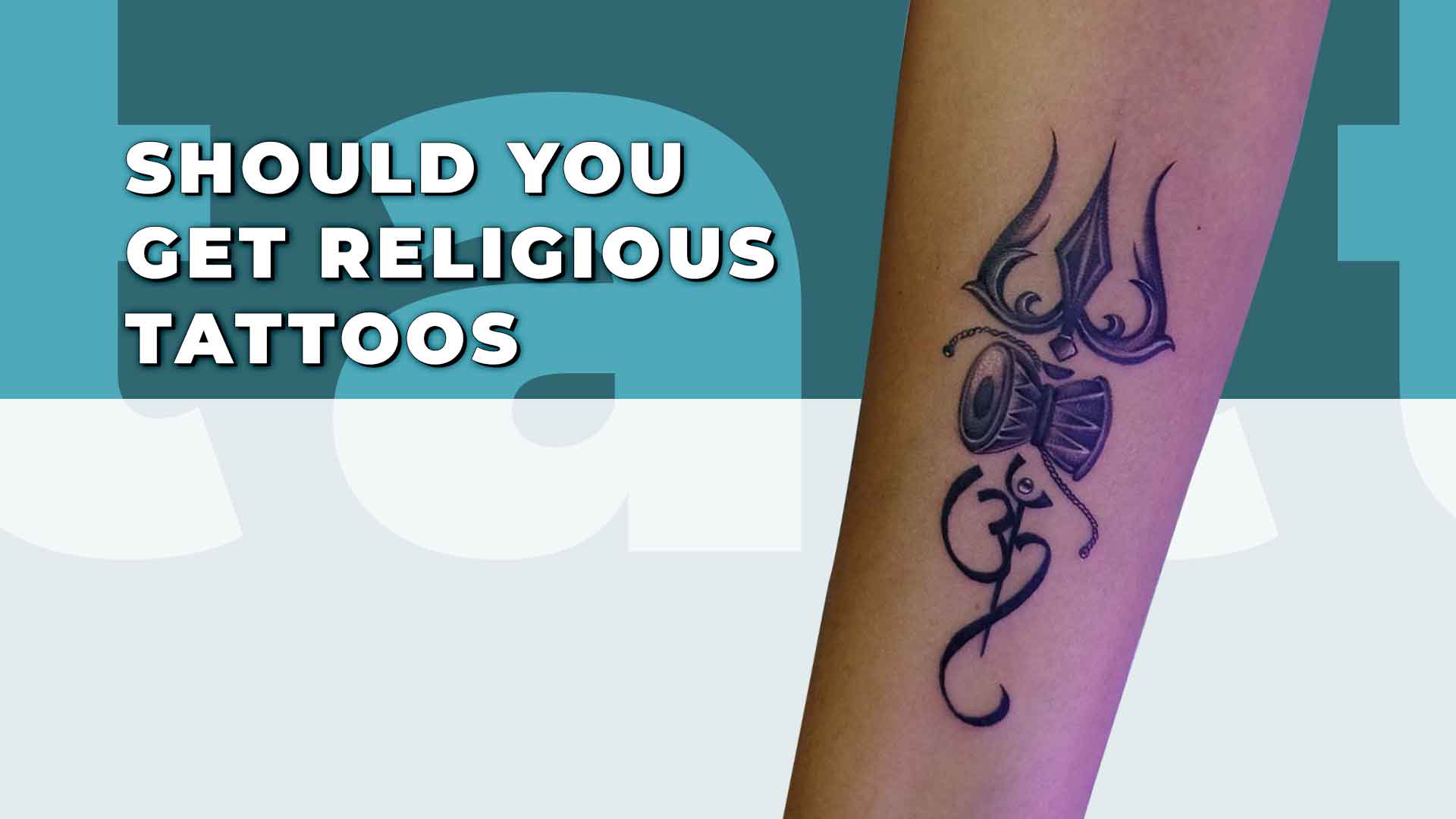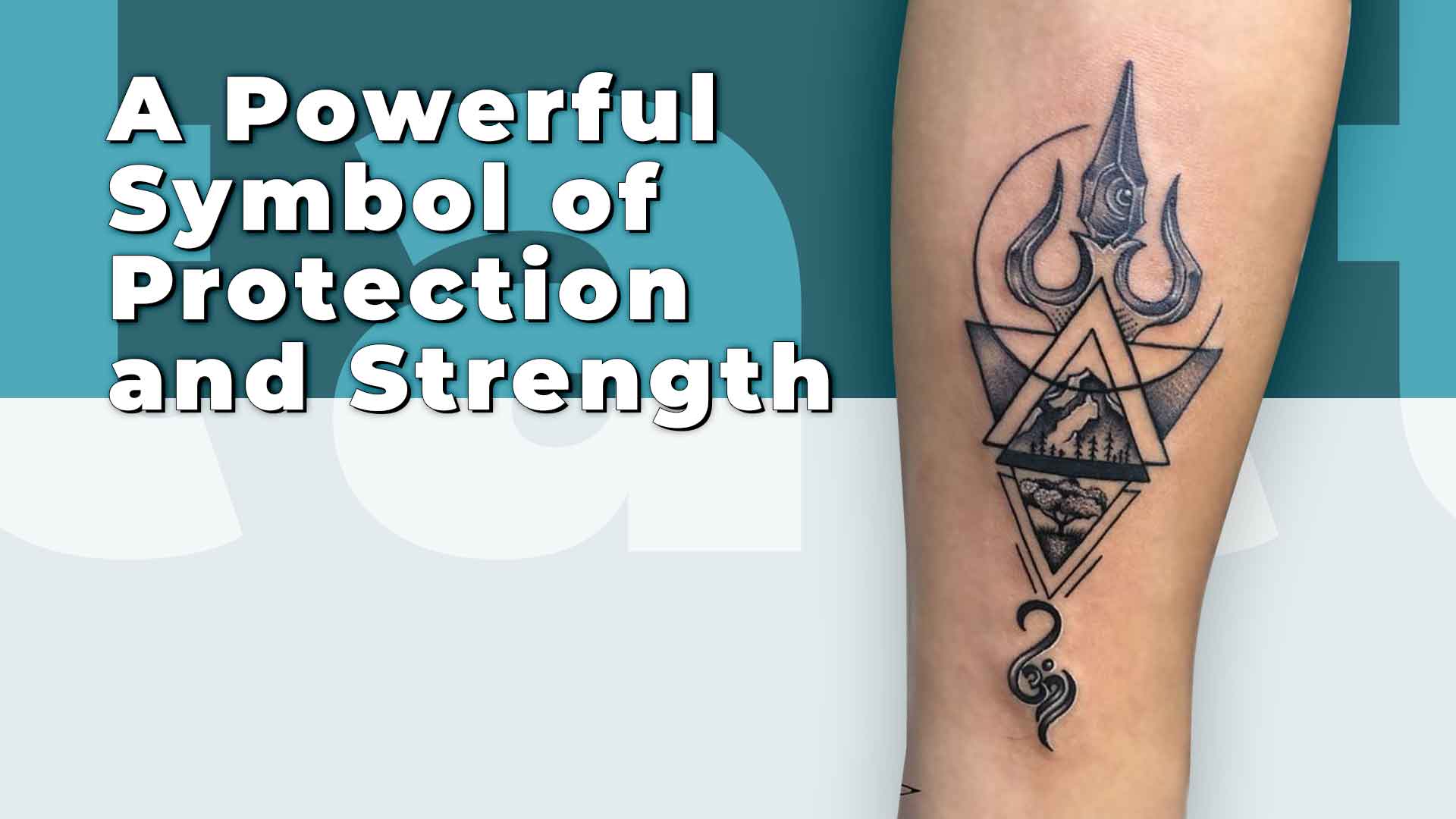As religious tattoos have become increasingly popular, more individuals are choosing to get a “Trishul” tattoo. Lord Shiva is often associated with his favored weapon, so a depiction of the Trishul is often included when people think of him. The Trishul represents the holy trinity of Hindu mythology, consisting of Lord Brahma, Lord Vishnu, and Lord Shiva. So what exactly is the divine weapon, and why are so many people choosing to permanently ink it onto their skin?
Trishul tattoos are a popular design among people who follow the Hindu religion or have an affinity for Hindu mythology. The trident, known as the “Trishul,” is a divine weapon attributed to Lord Shiva, one of the three primary deities in Hindu mythology. It is also believed to be one of the weapons used by the Goddess Durga. The word “Trishul” has its roots in Sanskrit, with “tri” meaning “three” and “shul” meaning “a sharp iron pin or stake.” Lord Shiva is often depicted wielding this weapon to vanquish evil, which is usually in the form of demons or “asuras.” The trident’s three blades represent the three Gunas – “Rajas, Tamas, and Sattva” – as well as “Swarga, Bhumi, and Pataal,” which respectively mean heaven, earth, and the underworld. Among Shaivism followers, the Trishul tattoo is a popular choice.
Symbolism Behind Trishul Tattoo

The Trishul symbol is made up of three prongs, which are usually depicted as straight lines that converge at the top to form a point. The center prong is the longest, representing the preservation aspect of existence. The other two prongs are shorter, with one representing creation and the other destruction.
In Hindu mythology, the trishul is often depicted in the hands of Lord Shiva, who is known as the destroyer of evil. It is said to represent his power and strength and is often used to ward off negative energy and evil spirits. It is also associated with the Hindu goddess Durga, who is often depicted holding a Trishul in her hand.
Trishul tattoos are popular among both men and women, and can be a powerful symbol of strength, protection, and devotion. Some people choose to get the tattoo to show their commitment to their faith, while others get it as a reminder of the power and strength they possess within themselves.
Placement of Trishul Tattoo
Trishul tattoos can vary in size, design, and placement on the body. Some people choose to have a small Trishul tattooed on their wrist or ankle, while others opt for a larger design that covers their entire back or chest. The design can be simple or intricate, depending on the preference of the person getting the tattoo.
The placement of a Trishul tattoo can also hold significance. For example, a tattoo on the wrist or ankle may be seen as a constant reminder of the wearer’s connection to their faith, while a tattoo on the chest or back may be seen as a more personal and private symbol of strength and protection.
Those who appreciate Trishul tattoos often choose to place the design on their arms or legs, as it is a slim and elongated image that doesn’t require much space. In fact, the tattoo can even be designed small enough to fit on one’s finger. Individuals who have served in the navy or worked in the maritime industry may opt to incorporate waves and sea creatures into the design, particularly if they want to associate it with Poseidon. Conversely, some prefer to depict the weapon in the hands of Lord Shiva, one of the most revered and feared gods in Hindu mythology. As these tattoos tend to be more prominent, they are often placed on the back or sleeve.
When choosing to get a Trishul tattoo, find a skilled and experienced tattoo artist who can create a design that is both aesthetically pleasing and accurate in its depiction of the Trishul symbol. Ensure the tattoo is done in a clean and safe environment to avoid the risk of infection or other complications.
Variations With Trishul Tattoo

Trishul tattoos are often depicted in conjunction with one of Lord Shiva’s other favored instruments, the “damru” or drum, which is associated with music rather than destruction. Some individuals may also include related Sanskrit mantras, such as the Maha Mrityunjaya mantra or “Om Namah Shivaya” in their designs.
Depictions of the Trishul and Lord Shiva can take on various forms, such as Nataraja to represent his love of dance, Ardhanareshwara to symbolize the fusion of masculine and feminine energies with his consort Parvati, or Rudra, the embodiment of destruction, among others. Photorealistic designs aim to recreate the weapon as realistically as possible to capture the god’s intense aura, while double exposure interpretations create an image-within-an-image effect that is also popular for Trishul tattoos.
Why Do People Get Trishul Tattoos?

The Trishul is a strong symbol that many people choose to adorn on their bodies as a sign of power and control over their lives. It is also used as a symbol of protection, as the original Trishul was used by the gods to safeguard their followers from evil. For some individuals, the weapon represents a means of warding off temptation and malevolent forces, allowing them to remain on the path of righteousness. Tattoo enthusiasts may use the Trishul to express their love of the enigmatic and vast seas. Women often depict the Trishul as a favored weapon of the powerful Goddess Durga or as a representation of their inner strength and might.
In the West, the trident has been interpreted as a symbol of death or an acknowledgment of one’s mortality. Tattoo designs often include a skull and bones, signifying the wearer’s awareness and acceptance of their mortality. In Greek mythology, this weapon is called a trident and was the preferred weapon of the sea god Poseidon, or Neptune, in Roman mythology. The trident is characterized by three prongs joined in the middle by a staff, which extends downward and serves as a handle for the wielder.
Should You Get Religious Tattoos?

Some individuals may feel hesitant to depict gods as tattoos on their bodies, but there are no karmic consequences for doing so. It is simply a representation of one’s faith and devotion, and they may choose to express it however they see fit.
While some religions and people believe that the human body is a sacred temple and should not be defiled, Hinduism has no such restrictions. Therefore, individuals are free to adorn their skin with Hindu religious and mythological symbols to their heart’s desire.
Final Thoughts
Trishul tattoos are a powerful and meaningful symbol in Hinduism, representing strength, protection, and devotion. They are a popular choice among people who want to show their commitment to their faith or who are drawn to the symbolism and mythology associated with the trishul. As with any tattoo, it is important to do your research and find a skilled and experienced artist who can create a design that is both beautiful and meaningful.

